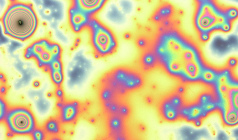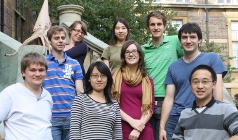Team:Cambridge
From 2011.igem.org
| (29 intermediate revisions not shown) | |||
| Line 1: | Line 1: | ||
{{Template:Team:Cambridge/CAM_2011_TEMPLATE_HEAD}} | {{Template:Team:Cambridge/CAM_2011_TEMPLATE_HEAD}} | ||
| - | '''' | + | <html> |
| + | <div id='wiki_content'> | ||
| + | <style type='text/css'> | ||
| + | .cam-home-row {margin-bottom: 15px;} | ||
| + | .cam-home-box {width:358px;height:200px;border: 1px solid lightgrey;text-align: center;opacity:.9;filter:alpha(opacity=90);} | ||
| + | .cam-home-box:hover {opacity:1;} | ||
| + | .cam-home-box-content{font-style: italic;font-size:14px;margin:5px;} | ||
| + | |||
| + | .cam-home-box.cam-home-left{float:left;} | ||
| + | .cam-home-box.cam-home-right{float:right;} | ||
| - | + | /*Background*/ | |
| + | .cam-home-box:hover {background: url("/wiki/images/c/c9/CAM_Bactiridescence_White_85.png") repeat scroll 0 0 transparent} | ||
| + | /*Borders*/ | ||
| + | .cam-home-box.cam-home-abstract:hover {border-color: #4fb84e;} | ||
| + | .cam-home-box.cam-home-colour:hover {border-color: #ee2424;} | ||
| + | .cam-home-box.cam-home-survey:hover {border-color: #3953a4;} | ||
| + | .cam-home-box.cam-home-tools:hover {border-color: #eea900;} | ||
| - | + | /*Title*/ | |
| + | .cam-home-box.cam-home-abstract:hover .cam-home-box-title {color: #4fb84e;} | ||
| + | .cam-home-box.cam-home-colour:hover .cam-home-box-title {color: #ee2424;} | ||
| + | .cam-home-box.cam-home-survey:hover .cam-home-box-title {color: #3953a4;} | ||
| + | .cam-home-box.cam-home-tools:hover .cam-home-box-title {color: #eea900;} | ||
| - | + | .cam-home-box-title {height:20px; color: #000000;margin-bottom:5px;} | |
| + | .cam-home-box-title p {font-size: 18px; font-weight: bold; margin:1px;} | ||
| - | + | .cam-home-photos {height:140px; background-image: url(/wiki/images/3/37/CAM_black_85.png); padding:5px;} | |
| + | .cam-home-photo {float:left;} | ||
| + | .cam-home-photo a {opacity: 1.0 !important;filter:alpha(opacity=100)!important;} | ||
| + | .cam-home-photo img {opacity: 0.9; filter:alpha(opacity=90);} | ||
| + | .cam-home-photo:hover img {opacity: 1.0; filter:alpha(opacity=100);} | ||
| + | #cam_home_sponsors {width:600px;margin-left:auto;margin-right:auto;} | ||
| + | .cam-sponsor-logo {width:180px;height:180px;margin:10px;float:left;background-image:url(/wiki/images/e/e4/CAM_SPONSOR_LOGOS.png);opacity:.7!important;filter:alpha(opacity=70)!important;} | ||
| + | .cam-sponsor-logo:hover {opacity:1!important;filter:alpha(opacity=100)!important;} | ||
| + | |||
| + | .cam-logo-1 {background-position: 0 0;} | ||
| + | .cam-logo-2 {background-position: -180px 0;} | ||
| + | .cam-logo-3 {background-position: -360px 0;} | ||
| + | .cam-logo-4 {background-position: 0 -180px;} | ||
| + | .cam-logo-5 {background-position: -180px -180px;} | ||
| + | .cam-logo-6 {background-position: -360px -180px;} | ||
| + | </style> | ||
| - | =='' | + | <div class='cam-home-row'> |
| + | <a href='/Team:Cambridge/Project' class='cam-color-exempt'> | ||
| + | <div class='cam-home-box cam-home-left cam-home-abstract'> | ||
| + | <div class='cam-home-box-title'> | ||
| + | <p>Abstract</p> | ||
| + | </div> | ||
| + | <div class='cam-home-box-content'> | ||
| + | <p>We investigated the properties of a novel yet under-researched group of proteins called reflectins.</p> | ||
| + | <p>Reflectins are interesting and unusual because of their self-organising properties, which cause them to produce dynamic structural colour.</p> | ||
| + | <p>We expressed codon-optimised reflectin in E. coli, and investigated the proteins' in vivo and in vitro effects.</p> | ||
| + | </div> | ||
| + | </div> | ||
| + | </a> | ||
| - | + | <a href='/Team:Cambridge/Project/Background' class='cam-color-exempt'> | |
| + | <div class='cam-home-box cam-home-right cam-home-colour'> | ||
| + | <div class='cam-home-box-title'> | ||
| + | <p>Structural Colour</p> | ||
| + | </div> | ||
| + | <div class='cam-home-box-content'> | ||
| + | <p>Nature’s colours don’t just come from pigments, but from structure too.</p> | ||
| + | <p>Cephalopods camouflage themselves using intracellular structures made from reflectins.</p> | ||
| + | <p>These are the only known proteinaceous structures to exhibit structural colour. They are inspiring a new class of responsive optical materials.</p> | ||
| + | </div> | ||
| + | </div> | ||
| + | </a> | ||
| - | + | <div style='clear:both;'></div> | |
| + | </div> | ||
| - | |||
| - | '' | + | <div class='cam-home-photos cam-home-row'> |
| + | <div class='cam-home-photo' style='margin-right:6px;'> | ||
| + | <a href='/Team:Cambridge/Project/In_Vitro'> | ||
| + | <img src='/wiki/images/6/60/CAM_home_image1.jpg' width='238px' height='140px' alt='Image 1' title='In-Vitro Thin Films of Reflectin'></img> | ||
| + | </a> | ||
| + | </div> | ||
| + | <div class='cam-home-photo' style='margin-right:6px;'> | ||
| + | <a href='/Team:Cambridge/Team'> | ||
| + | <img src='/wiki/images/3/37/CAM_home_image2.jpg' width='238px' height='140px' alt='Image 2' title='The Team'></img> | ||
| + | </a> | ||
| + | </div> | ||
| + | <div class='cam-home-photo'> | ||
| + | <a href='/Team:Cambridge/Project/Microscopy'> | ||
| + | <img src='/wiki/images/b/b1/CAM_home_image3.jpg' width='238px' height='140px' alt='Image 3' title='Microscopy'></img> | ||
| + | </a> | ||
| + | </div> | ||
| + | <div style='clear:both;'></div> | ||
| + | </div> | ||
| - | |||
| - | + | <div class='cam-home-row'> | |
| + | <a href='/Team:Cambridge/Society' class='cam-color-exempt'> | ||
| + | <div class='cam-home-box cam-home-left cam-home-survey'> | ||
| + | <div class='cam-home-box-title'> | ||
| + | <p>Impact of iGEM</p> | ||
| + | </div> | ||
| + | <div class='cam-home-box-content'> | ||
| + | <p>We wanted to know what effect the iGEM competition has had on its past contestants.</p> | ||
| + | <p>We were also interested in what past participants thought of iGEM and how it shaped their view of synthetic biology.</p> | ||
| + | <p>We got in touch with a number of iGEM alumni and asked them to share their experience.</p> | ||
| + | </div> | ||
| + | </div> | ||
| + | </a> | ||
| + | |||
| + | <a href='/Team:Cambridge/Project/Gibthon' class='cam-color-exempt'> | ||
| + | <div class='cam-home-box cam-home-right cam-home-tools'> | ||
| + | <div class='cam-home-box-title'> | ||
| + | <p>Tools</p> | ||
| + | </div> | ||
| + | <div class='cam-home-box-content'> | ||
| + | <p>We used Gibson Assembly exclusively to build our constructs during the competition. This allowed us to do multi-part assemblies faster and with fewer bugs than if we had used standard techniques.</p> | ||
| + | <p>We contributed to a collection of software tools called <i>Gibthon</i> (initiated by Cambridge iGEM 2010), which aids the design of primers for Gibson assembly.</p> | ||
| + | </div> | ||
| + | </div> | ||
| + | </a> | ||
| + | <div style='clear:both;'></div> | ||
| + | </div> | ||
| + | |||
| + | <div id='cam_home_sponsors'> | ||
| + | <a href='http://www.cambio.co.uk/' class='cam-sponsor-logo cam-logo-1'></a> | ||
| + | <a href='http://www.anachem.co.uk/' class='cam-sponsor-logo cam-logo-2'></a> | ||
| + | <a href='http://www.fisher.co.uk/' class='cam-sponsor-logo cam-logo-3'></a> | ||
| + | <a href='http://www.clontech.com/' class='cam-sponsor-logo cam-logo-4'></a> | ||
| + | <a href='http://www.geneflow.co.uk/' class='cam-sponsor-logo cam-logo-5'></a> | ||
| + | <a href='http://www.promega.com/' class='cam-sponsor-logo cam-logo-6'></a> | ||
| + | </div> | ||
| + | |||
| + | </div> | ||
| + | </html> | ||
{{Template:Team:Cambridge/CAM_2011_TEMPLATE_FOOT}} | {{Template:Team:Cambridge/CAM_2011_TEMPLATE_FOOT}} | ||
Latest revision as of 01:20, 22 September 2011
Abstract
We investigated the properties of a novel yet under-researched group of proteins called reflectins.
Reflectins are interesting and unusual because of their self-organising properties, which cause them to produce dynamic structural colour.
We expressed codon-optimised reflectin in E. coli, and investigated the proteins' in vivo and in vitro effects.
Structural Colour
Nature’s colours don’t just come from pigments, but from structure too.
Cephalopods camouflage themselves using intracellular structures made from reflectins.
These are the only known proteinaceous structures to exhibit structural colour. They are inspiring a new class of responsive optical materials.
Impact of iGEM
We wanted to know what effect the iGEM competition has had on its past contestants.
We were also interested in what past participants thought of iGEM and how it shaped their view of synthetic biology.
We got in touch with a number of iGEM alumni and asked them to share their experience.
Tools
We used Gibson Assembly exclusively to build our constructs during the competition. This allowed us to do multi-part assemblies faster and with fewer bugs than if we had used standard techniques.
We contributed to a collection of software tools called Gibthon (initiated by Cambridge iGEM 2010), which aids the design of primers for Gibson assembly.
 "
"



